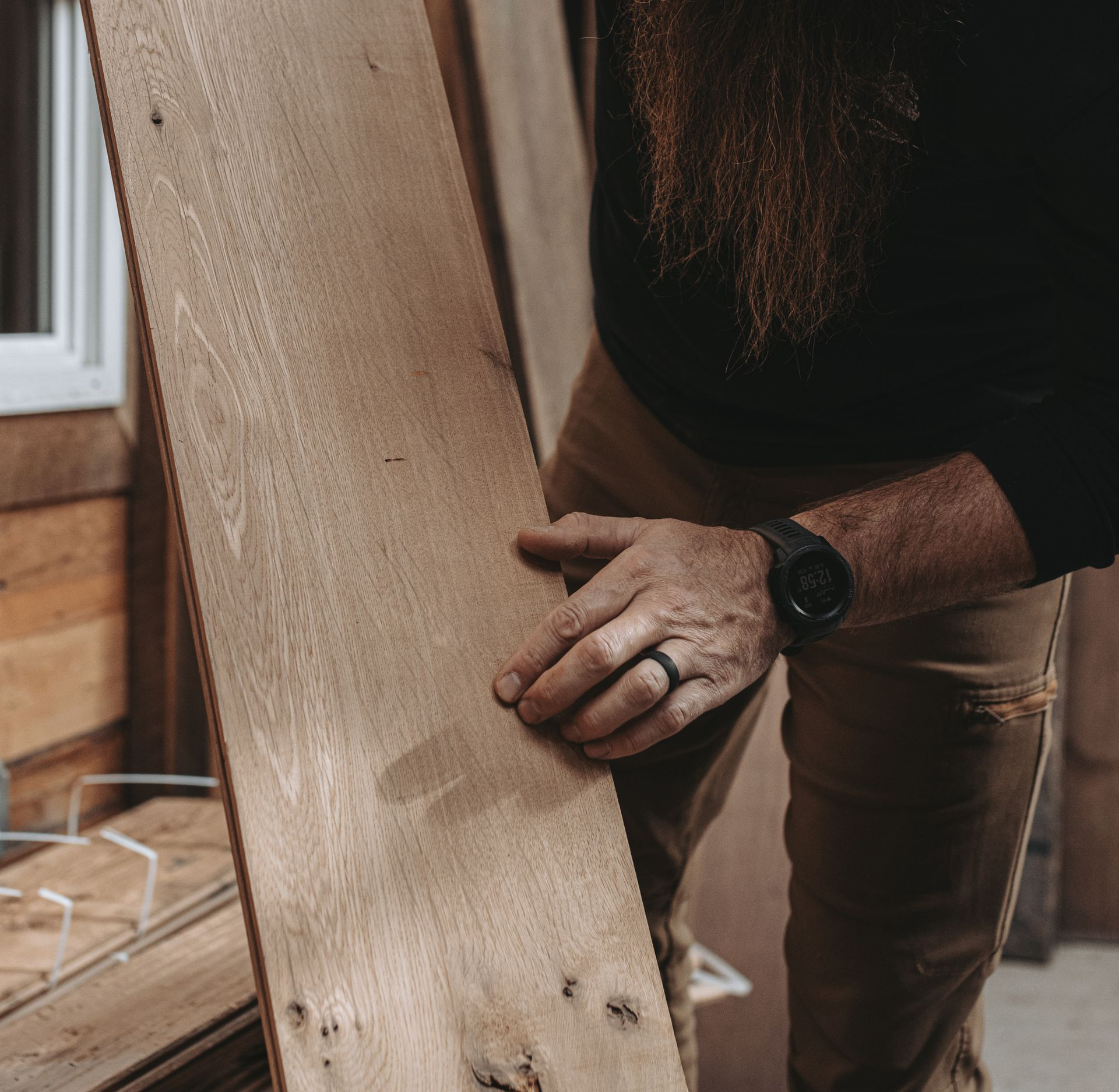Face Grain: Aesthetic Perfection or Structural Weakness?
Face Grain Demystified: Balancing Beauty and Strength in Woodworking

When you’re working with wood, one big decision you have to make is grain orientation. Should you pick it based on looks? Or should strength come first? At Bay & Bent, we’ve seen how thoughtful decisions can balance both beauty and function. Let's break down what face grain is and how to decide where it fits in your projects.
What Is Face Grain?
Face grain is the side of a board that reveals the wood’s flowing patterns and growth lines. This is the part of the wood that most people find the most striking. Other types of grain include:
- Edge grain: The narrow side of the board showing the ends of growth rings.
- End grain: The cut ends showing circular tree rings.
Choosing face grain can affect both how a piece looks and how it performs. It’s known for its visual beauty, but it’s less commonly used when strength is your top concern.
Why Face Grain Looks Amazing
There’s a reason face grain is so popular in woodworking. It’s beautiful! Some of the most eye-catching patterns come from face grain:
- The wavy “cathedral” look in oak.
- Light-catching “flames” in maple.
- Bold stripes in mahogany.
If you’re creating furniture, panels, or other decorative pieces, face grain is an obvious go-to. It’s what clients expect in items they show off, and it’s perfect for images in portfolios or ads.
When Appearance is Priority
Face grain is especially ideal for:
- Cabinet fronts
- Tabletops
- Wall panels
- Picture frames
It’s what turns everyday wood into works of art.
The Structural Trade-Off
While face grain looks great, it’s not always the strongest option. Wood is stronger when the force acts across its growth rings rather than parallel to them. That means edge grain is often the better choice for handling heavy loads or impact.
Take a simple shelf, for example. A board with its face grain showing will bend or warp more easily compared to when edge grain is shown. Sometimes, the strength difference can be up to 40%. For heavy-duty projects, this difference matters.
Where Strength Matters Most
Edge grain tends to perform better in:
- Flooring (withstands foot traffic)
- Structural beams (supports large loads)
- Cutting boards (resists knife marks and wear)
- Stair treads (handles stress and daily use)
Face grain might not be the best fit for these high-stress applications.
How Moisture Affects Face Grain
Wood expands and contracts when it absorbs or loses moisture. With face grain, this movement can lead to cupping or warping because the growth rings “flatten” or curve over time.
If you’re using face grain in a project, you’ll need to think ahead:
- Use proper joints to allow for movement.
- Support the pieces well.
- Pick wood species known for stability.
The key is accommodating the natural behavior of wood rather than fighting against it.
When Face Grain Works Best
Face grain shines in situations where looks matter more than strength. Use it for:
- Decorative finishes: Furniture, panels, and display pieces.
- Low-stress areas: Cabinet doors, wall art, and trim.
- Stable species: Wood like mahogany and teak, which are naturally less prone to warping.
When appearance comes first and the demands are light, face grain can deliver unbeatable results.
When to Use Alternatives
There are times when other grain orientations make more sense:
- Heavy-duty areas like beams, workbenches, and industrial shelving.
- High-wear surfaces such as cutting boards, flooring, or stairs.
- Precision instruments or jigs, where stability is non-negotiable.
If looks aren’t the top priority, edge or end grain might lead to a longer-lasting, more functional piece.
Combining Grain Orientations
Sometimes, the best solution is blending face grain with other orientations to balance beauty and function. Use face grain for visual impact, but reserve edge grain for parts that need strength. For example:
- A dining table might have a face grain top, but edge grain legs.
- Shelving could show face grain edges for style, but use edge grain for durability.
The Role of Wood Species
Some woods are naturally stable and suitable for face grain applications, while others aren’t. Here’s a quick guide:
- Good choices: Teak, mahogany, and ash are stable and work well regardless of orientation.
- Handle with care: Pine and maple can be prone to movement and may need edge grain for structural roles.
Smart Design for Grain Orientation
Instead of forcing your wood to work with a rigid design, adjust your plans around the properties of the material. Here are some tips:
- Work with natural movement instead of trying to stop it.
- Plan where joints go to account for shifts in the wood.
- Select species wisely based on aesthetics and performance needs.
- Allow for adjustments in hardware or joinery to handle changes over time.
The wood itself can guide your design if you take the time to understand it.
The Final Takeaway
Face grain isn’t bad or weak. It just serves a different purpose. It’s all about balance. Some projects need beauty, while others require strength. With careful planning, you can use each type of grain effectively to create something that’s both functional and visually stunning.
At Bay & Bent, we’ve seen how thoughtful decisions about these details lead to better, longer-lasting results. The next time you’re deciding whether to go with face grain, think about your project’s needs. By balancing beauty with practicality, you can create something you’ll be proud of for years to come.









